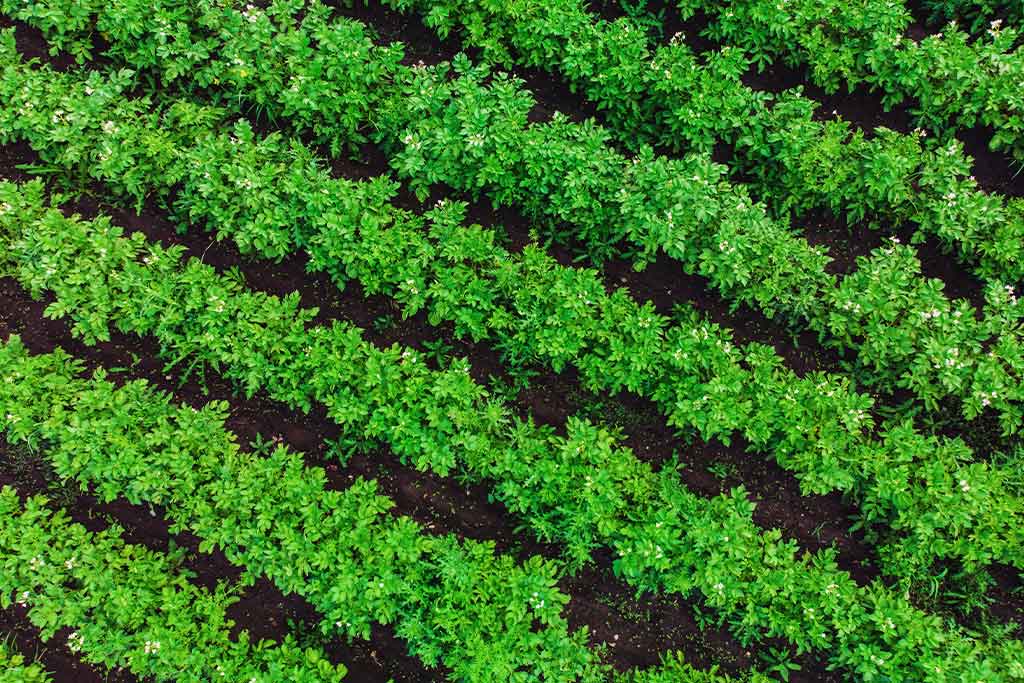Drones, or unmanned aerial vehicles (UAVs), have become increasingly popular. Originally developed for military purposes, drones are now widely used in a variety of industries, including agriculture. In particular, drones have proven to be extremely useful in potato fields – offering farmers a range of benefits previously unattainable. Let’s take a closer look at how drones are used in potato farming and explore some of their key advantages.
What are the benefits of using drones in potato farming?
Improved crop monitoring
One of the primary benefits of using drones in potato farming is improved crop monitoring. Drones can fly over the fields and capture high-resolution images of the crops, allowing farmers to detect any potential issues early on. For example, they can spot signs of disease, pest infestations, and nutrient deficiencies before they become too severe. This enables farmers to take action quickly, which ultimately leads to higher yields and better-quality potatoes.
Increased efficiency
Another advantage of using drones in potato farming is increased efficiency. Drones can cover large areas of farmland quickly and easily, and they don’t require any manual labor. This means that farmers can save time and reduce labor costs, which can be especially beneficial during the busy growing season.
Enhanced precision
Drones are also capable of performing highly precise tasks, such as applying fertilizers and pesticides to specific areas of the field. This form of precision agriculture can help farmers minimize waste and reduce the risk of over-application, which can be harmful to the environment and also quite expensive.
Cost-effective
Compared to traditional crop monitoring methods, such as manned aircraft or ground-based surveys, using drones is a more cost-effective option. Drones are relatively inexpensive to operate and maintain, and they can cover large areas of land in a short amount of time. This means that farmers can save money on labor costs and equipment, which ultimately leads to higher profits.

How are drones used in potato farming?
Crop mapping
One of the most common uses of drones in potato farming is crop mapping. Drones can capture high-resolution images of the crops, which can be used to create detailed maps of the fields. Farmers can then use these maps to identify areas that require special attention, such as those experiencing nutrient deficiencies or pest infestations.
Disease detection
Drones can also detect early signs of disease in potato crops. By capturing images of the plants at regular intervals, farmers can monitor their health and identify any potential issues early on. This allows them to take action quickly and prevent the spread of disease throughout the field.
Pest control
Drones are excellent tools for pest control in potato fields. By applying pesticides to specific areas of the field, farmers can minimize the risk of over-application and reduce the amount of chemicals that are released into the environment. This can be especially important for organic farms, where the use of pesticides is restricted.
Yield estimation
Drones are also a tremendous asset in estimating crop yields. By capturing images of the crops at regular intervals throughout the growing season, farmers can monitor their growth and predict their final yield. This can help them make more informed decisions about when to harvest the crops and how much to expect.
The use of drones in potato farming offers a range of benefits that were previously unattainable. As technology continues to advance, we can expect to see even more innovative uses of drones in agriculture in the years to come. ABZ Innovation is an integral part of this process. Our team aims to bring drones to the market through individual development projects that use the latest technologies to eliminate gaps and respond most effectively to farmers’ needs.



